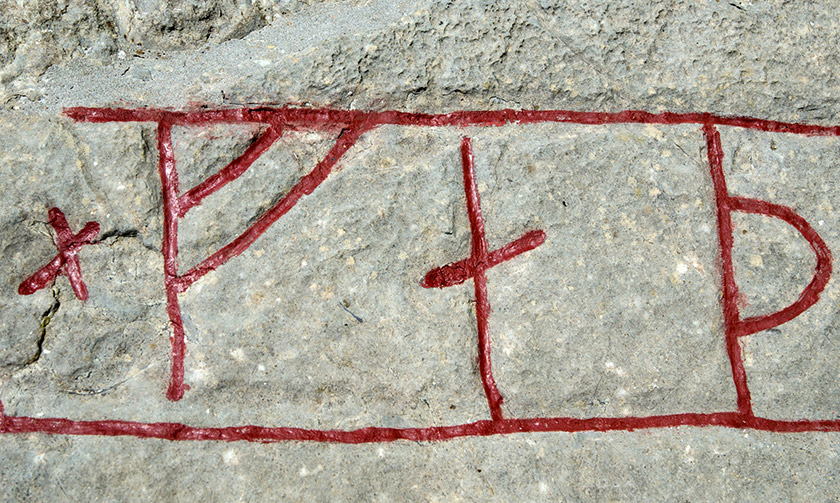
Viking runes were not for everyday use. The Northmen's history was told orally, and runes used only to record moments of great importance. Let's dive deep into the fascinating world of the Viking alphabet.
We’ve talked before about the many remaining runestones of Scandinavia. These magnificent monoliths with intricate imagery litter the landscape of Scandinavia. But how much do we know about what they say?
Let’s continue our look at Viking history and take a deep dive into the runic alphabets.
Origins of Viking runes
The exact origins of the runes used by the Germanic people of Northern Europe in the first millennium of the Common Era are up for debate. The characters share similarities with various other writing systems yet none of them match up precisely enough to form a definitive ‘yep, this is it’ for the scholars.
The runes clearly developed from the old Italic scripts used on the Italian peninsula in ancient times, which in turn came from the Greek alphabet.
It’s possible that they came from the Etruscan alphabet, which went on to become the Latin alphabet that English and most Western languages use to some extent today.
How we get from Italy to Scandinavia is also up for discussion! As the runes first appear in Denmark and Northern Germany, there are two hypotheses for how they got there.
Read more: A Brief History of Norway
The West Germanic Hypothesis sees them develop via the nomadic groups around the Elbe river. The Gothic Hypothesis sees them develop through the East Germanic expansion through areas such as modern-day Ukraine and Belarus.
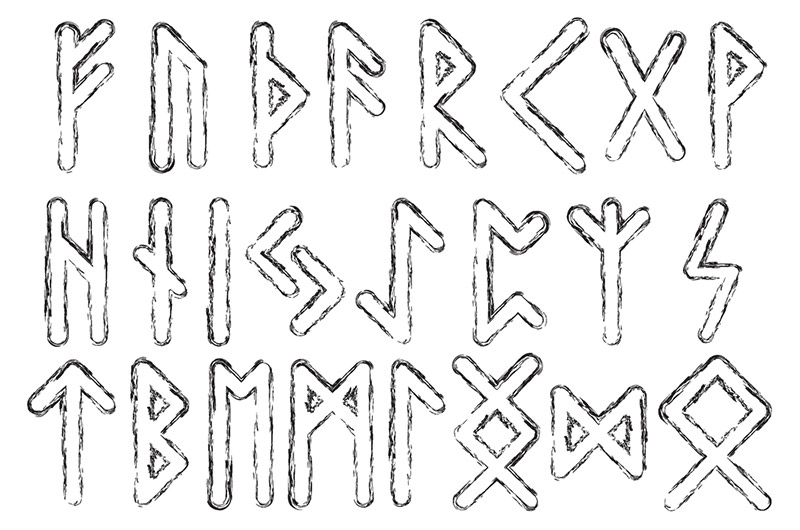
What’s in a name?
We often see the rune systems referred to as ‘runic alphabets’, which is a perfectly acceptable term for most people.
But alphabet comes from ‘alpha beta’ or ‘aleph beth’ the two first letters in the Greek and Hebrew alphabets. The runes don’t start with A and B, they start with F and U, which could lead to some interesting problems!
Read more: Life in Norway's Viking Blog
Instead, scholars refer to the Scandinavian runic systems as a Futhark or Fuþark after the first 6 letters: F, U, Th/Þ, A, R and K. If you’ve ever wondered where the letter Þ (known as thorn) comes from, it’s from the runes.
You’ll regularly encounter it throughout old Norse and Anglo-Saxon literature. It was dropped from the Scandinavian and English languages in favour of ‘th’ but it lives on in Icelandic.
The name rune comes from the Germanic root run- meaning secret or whisper. The word has similar meanings in celtic language although in others it refers to cutting with a knife, speech or miracle. It’s likely that the word does indeed refer to ‘secrets’ as in the beginning, runes were developed by and known only to the elite.
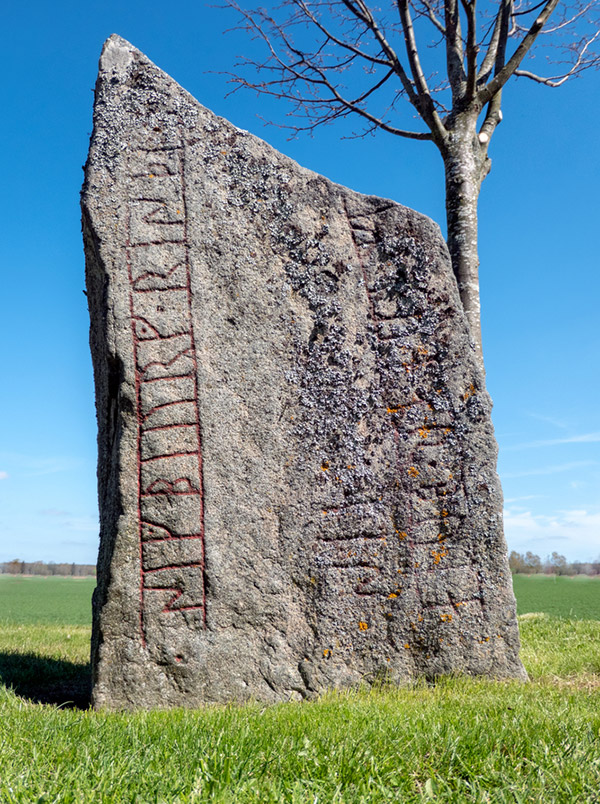
The mystical quality of runes is often cited but is rarely borne out by actual findings. What we do know is that runic inscriptions were typically reserved to remember moments or people of great importance. In the Viking Age, this was no everyday alphabet.
Multiple systems of runes
In terms of Viking runes in Scandinavia and elsewhere, there isn’t just one single set. Instead the systems continued to develop. We consider three different Futharks as covering the period: Elder Futhark and Younger Futhark.
There’s also Anglo-Saxon Futhorc which is a development of the Germanic tribes that migrated towards England during the period. It’s called a Futhorc to reflect the changes in sound that happened during this period.
Younger Futhark is divided into three: long-branch runes, Rök runes and stavlösa or Hälsinge runes (also known as staveless runes). While they have all been seen in all parts of the region, the long-branch are more common in Denmark and the Rök are more common in Sweden and Norway.
Younger Futhark developed into the medieval runes that followed the Viking Age. These are considered a response to the growth of the Latin alphabet, which was resisted by many at the time.
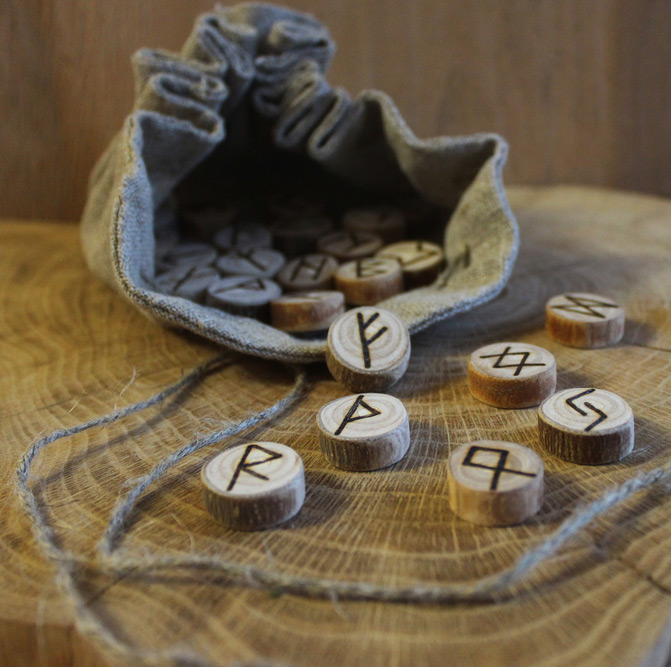
The medieval runes are probably the runes that people recognise best. There was further development in the 16th century into the dalecarlian runes or dalrunes that were in use in the Swedish province of Dalarna right up until the 20thcentury. For this reason. Dalarna is known as the ‘last stronghold of Germanic script’.
Elder Futhark runes (until around 800CE)
The Viking period kicked off with Norse still using the Elder Futhark, which is the one that most closely resembles the Italic scripts that it came from. There’s also evidence that the travel was not a one-way thing. The 4th century Gothic alphabet, derived by the Greeks to translate the bible, contains two characters than can only have come from runes.
The Futhark consists of 24 runes. Each rune likely had a name, chosen to represent the sound of the rune itself. The names of the runes are preserved in the Old English Rune Poem, which contains stanzas about each character along with 5 from the Anglo-Saxon Futhorc.
The runes were usually arranged into groups of 8, known as an ætt or the ættir. In Elder Futhark we have:
f u þ a r k g w; h n i j ï p z s; t b e m l ŋ o d
Several of the runes show no variation from the Italic alphabets and how the developed into the Latin alphabet.
g, a, f, i, t, m and l correspond exactly to our X, A, F, I, T, M and L.
u, r, k, h, s, b and o are widely held to correspond to V, R, C, H, S, B and O.
The rest of the letters may be either innovations or adaptations of unneeded Latin letters.
The earliest known sequential listing of the Futhark dates from 400CE and is found in Gotland on the Kylver Stone.
The invention of Elder Futhark has been ascribed to a single person or small group. These were likely mercenaries in the Roman Army or merchants who traded in the region. Opinions are divided on the original purpose but most of the early examples suggest that the idea was an artificial imitation of the roman scripts intended to be playful rather than a serious attempt at scripture.
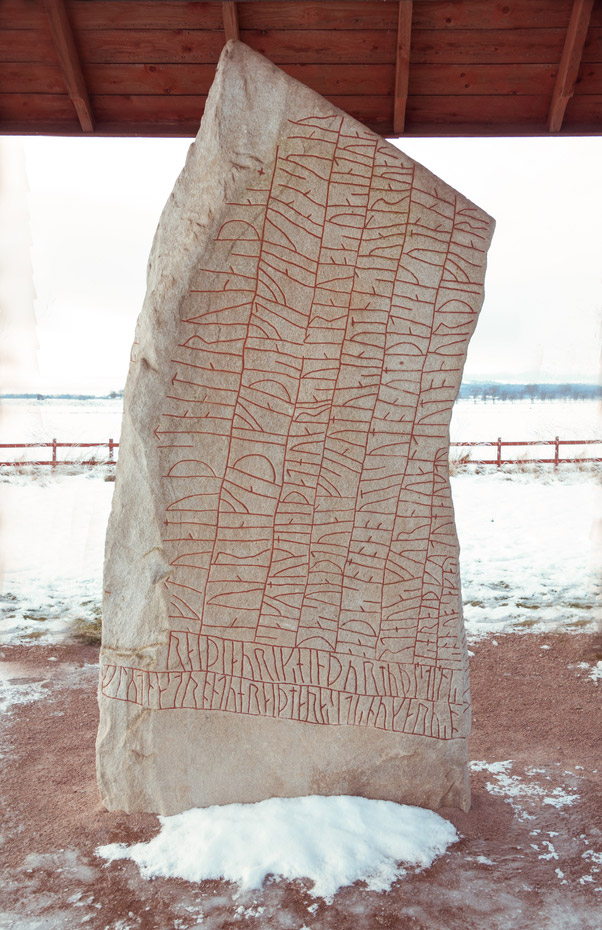
Younger Futhark (800-1100CE)
The most important development of runes as far as Vikings were concerned is the Younger Futhark. Oddly, as most other writing systems were expanding at the time, The Younger Futhark is actually a simplified and condensed system, consisting of only 16 characters. This is despite the fact that the number of phonemes, or sounds, in the language was growing!
In contrast to the Elder Futhark, which was known to and used by an elite, the Younger Futhark spread throughout the wider population of the region. This is evidenced by the fact that there are vastly more examples of Younger Futhark that have been found and several of them are of a more trivial, almost casual nature.
The first ætt lost the letters g and w to become, simply, f, u, th, a, r and k.
The second ætt lost the letters æ and p to become h, n, i, j, z and s. The j sound became an a sound and the z moved position.
The third ætt lost 4 letters, e, n, o and d to become t, b, m and l.
The later runes
At the end of the Viking Age, with the Christianisation of Scandinavia, the Latin alphabet was mostly adopted in the region. But that’s not the end of the story for runes. Many people were determined to hang on to Old Norse and the runic systems that they comprised.
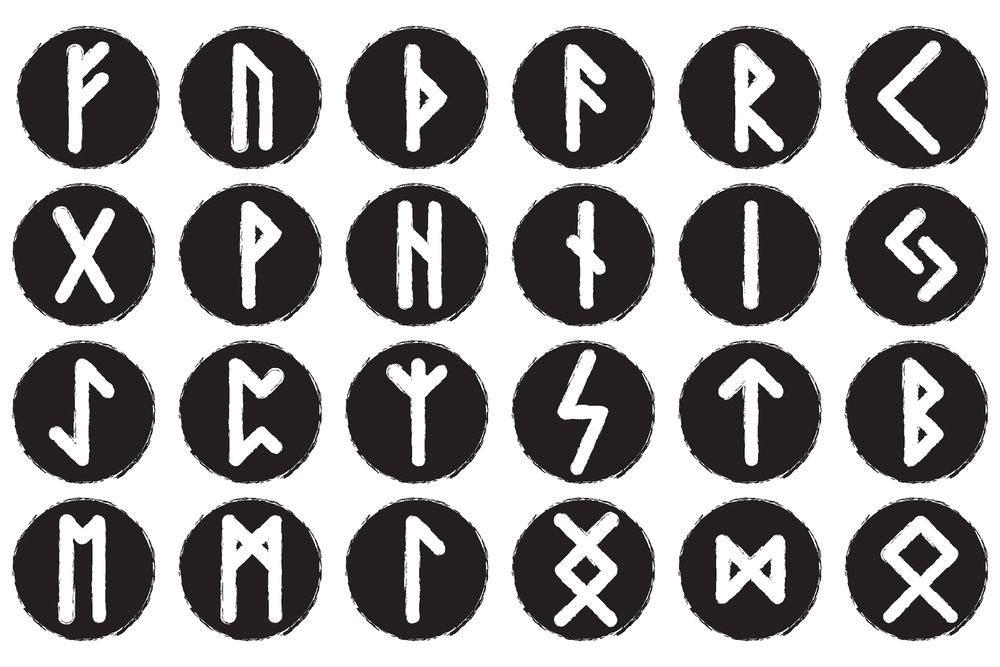
The first development was the addition of dots. Rather than create new runes for the phenomes that were missing, they simply took the existing runes and added dots to make new ones. This is similar in concept to accents in foreign languages. The e rune is simply an i rune with a dot.
Even though the medieval runes were ‘competing’ with the latin alphabet used by the Christian Church, we still have many examples of biblical inscriptions done in runes. Farmers, too, would continue to use runes for marking goods and communicating for many years.
Finally, the runes died out but, as mentioned above, they were in active use until the end of the 20th century.
Interpreting runes
We know a lot about the runes and how they transliterate to modern characters. Rather more difficult is working out precisely what they meant.
As the Younger Futhark was condensed, so each character could stand for multiple sounds. If you don’t necessarily have the context then it’s impossible to know for sure which of the sounds was meant. For example, the i rune was used for e and I so a word like pick could mean pick or peck.
One other problem is that, as runes became obsolete – the language developed away from certain sounds towards others – so the runes would often simply be reused for a different sound. So, you could end up with a system where, for example, KAT could mean cat or hat or bat depending on when it was written and whether the writer had updated knowledge of the new sounds.
With some runestones it’s easy to tell the context and the translation is relatively straightforward. With others, we will never know exactly what they mean and all we can make is a best guess.

The use of Viking runes today
It’s a sad fact that several of the runes have been co-opted by the far-right, in particular neo-nazis. The most noticeable is the Sowilo rune, which doubled up to become the symbol of the SS. The Eihwaz, Algiz, Othala and Hagal runes also had specific meanings in Nazi Germany. Runes from the Younger Futhark were developed into the Armanen runes by Guido von List
Many of these runes are still used today as subtle symbols of support for far-right and neo-nazi ideology that can be worn as pendants and tattoos without drawing attention. Everyone recognises a Swastika but only people in the know are likely to understand the meaning of, for example, the Othala rune.
Groups of role-players and Viking or runic enthusiasts are actively involved in trying to reclaim the runes from these groups. Clearly, they want to be able to wear and use runes without the negative connotations.
Runes also appear in Tolkien’s The Hobbit as map markers, to emphasise their connection to the dwarves. They also appeared in early drafts of The Lord of the Rings, before being replaced by Tolkien’s own rune-like Cirth script.
The Bluetooth logo, used on millions of electronic devices worldwide, is a combination of the hagall and bjarkan runes. These correspond to the letters H and B, which are the initials of Harald Blåtan, also known as Harald Gormsson with the nickname Bluetooth. Harald was a king of Denmark and Norway in the Viking age.



The far right are not nazis. The nazis were the socialist left.
Nazis weren’t “Socialist” as we know it. It’s a syllogism They were anti-Semitic, favored scientific racism, used eugenics, rejected all sexual orientations out side of hetero — none of which correspond to the left. Nazism was accepted mostly due to it being an enemy to the political left. The word being used did not translate into reality and even Hitler struggled with the political implications of having socialism in the party name. Instead of controlling the means of production or redistributing wealth to build a utopian society, the Nazis focused on safeguarding a social and racial hierarchy. You can label an apple an orange.
“The far right are not nazis. The nazis were the socialist left.”
ONLY NAZIS SAY THIS.
Try reading Heinrich Himmler’s speech against homoseuals. I read an English version. He spoke against homosexuals and in the same speech mentioned that Germany had become an expert at abortion. It was Sigmund Freud who was the leftist and his students and his nephew. Sigmund’s disciples, the phycologists, a Jewish writer wrote, are 97% atheists. Freud’s disciples repeatedly promote sexual abominations. In the 1960’s with promotion of black-culture & catholism came abortion and many other evils to America. The left suppressed the right too long. Action needed to be done. Like Isaiah 10, Yahweh raised up Assyrian powers (with others) to humble evil. Leviticus 26 & Deuteronomy 28: Benedictions for obedience; curses for disobedience. Yahweh is true. He performs His will. “When he (Ephraim) goes….” (Hosea or Amos). British-Israelim teaches that Anglo-Saxons are the majority of modern Joseph. When Neville Chamberlain went to see Hitler —– Assyrian led Germany rose up to conquer nations and to punish Ephraim, even though Chamberlain declared “Peace! I think it will be peace in our time!”
Just being clear, I am NOT a neo Nazi, I just practice Norse paganism. One of the most irritating things is having someone preach to the choir trying way to hard to convert people who are different. Just hear me out. How do you think a Christian would feel if I went up to them and tried to get them to worship Odin? Or maybe even told them that they are damned to a “hell” because what they believe in is not what I agree with?
So little boy.. I see you battle girls.. I’m a viking and have always been.. you want to call me a neo Nazi then we can meet up and I can see what a “man” you are.. we can call it a holmgang.. normally it is a battle for honor but you don’t got none so I just walk away with your close from your bleeding body.
Enily, only dim heads say something like that. Would you be able to provide the country you reside in or provide your nationality?
Please never associate nazis with runes, thank you.
Funny thing is, you are both right and wrong. The Nazis were, absolutely, Socialists. They weren’t part of the Marxist Socialist movements but they were still Socialists in that they believed the economy should be organized and directed by the state. The terms “Right Wing” and “Left Wing” come from the time of the French Revolution where the monarchists in the National Assembly sat on the right and the radicals on the left. And this has been a common way to describe the political divide in the West. But the funny thing about America is that its “Monarchists” treat the US Constitution as a sort of king, the supreme law of the land. And the US Constitution, for the time it was written, created a fairly radical system of Government. As the Constitution created a system or limited Federal power, the American Right supports limited government which is highly restricted in what it can’t and can’t do. So, from the American standpoint the Nazis were a Socialist Left movement. However from European standpoint they were Far Right.
“They were anti-Semitic, favored scientific racism, used eugenics, rejected all sexual orientations out side of hetero — none of which correspond to the left.” Those are not leftist politics of today, but they were often the politics of the Soviet Union and other socialist countries. Nazis had private ownership, but they definitely believed in the central state controlling the economy, especially the means of production. Part of the problem is the ambiguity of the word “socialism.”
Now as to the politics of the left and eugenics: It is a matter of when you are speaking. All one has to do is read Sanger’s essay “A Better Race Through Birth Control.” You will find disturbing lines like “This is especially the case in the nations which have reached the highest degree of civilization, for it is just in these nations that the degenerate and defective are enabled to produce the largest number of progeny” and “It is impossible to conceive of eugenic legislation that would be acceptable and that would cover the present need. Our knowledge is insufficient to insure intelligent race culture through statute law. Fortunately, however, Birth Control offers an avenue of escape. It is reasonable to assume that women of subnormal mentality, however lacking they may be in vision and altruism, would prefer to avoid the pain and responsibilities of procreation, if the satisfaction of sex could be divorced from reproduction. Given Birth Control, the unfit will voluntarily eliminate their kind.” These disturbing words are hers. And she was a woman of the Left.
What is your nationality? Political leanings differ nationally, and please, never associate runes with nazis. Thank you.
Teach a person history, and no one bats and eye; use the word Nazi, and everyone loses their mind!
I appreciate how well you’ve put all this knowledge together and delved into the real context of the runes as a language. I am still hesitant about using them in divination because I am an English speaker, which means the sounds I use to create my words are no longer the same sounds in conjunction with the ancient meaning of the words I want. Almost like I’d need to learn Gaelic, or Old Germanic to properly understand them.
Besides that, this was a pleasurable read, thank you Andrew!
Yes! Thank you for addressing the article instead of getting fixated on the word “Nazi” weather it was accurate or not. I enjoyed the read to further my knowledge of attempting to understand the origin of “Runic Alphabet”
Any good recommendations for books to learn more?
When one studies genetics, recessive genes are passive and dont show when combined with dominant genes for the same trait. When these scientific truths are combined with The Bible and with history, one can discern an very terrible use of the term “anti-Semetic”. Assyrians had a colony in Germany. Assyrian forefather was Asshur. Asshur is from Shem | Sem. To the contrary to popular opinion, the Nazis were one of the most pro-Semetic groups on the planet.
Sons of Shem | Sem:
Genesis 10:11-12; 21-31
Elam, Asshur, Arphaxad, Lud, Aram
These five sons of Shem are the post-flood forefathers of the white peoples.
The Assyrians came from Asshur.
The Chaldeans came from Arphaxad. Abraham came from the Ur of the Chaldees (city called Light of the Chaldeans [ עיר כשדים ]).
ܐܒܪܗܡ אברהם Abraham
There are modern colonies of Assyrians and Babylonians in Sweden are there not?? To see what real “anti-Semetism” looks like. We need to see who is “Semetic” first. What do the descendants of Shem | Sem | שם | Σημ all have in common?????
What did they all have in common? I’m interested in following this train of thought.
so how do I write my name “lyre” in runes? it’s pronounced as layr not lay-re
Confusing. Is or was there ever a rune that was a hooked ‘X’?
For those who thing execrating homosexuality and strangers was a privilege of the, supposed, far right, (whatever that mean as someone brightly sayd above) i would suggest to learn Lenin, Stalin politics about foreigners and homosexual.
There s not much diference betwen “left” Socialist from comunism and “right” socialism from Nazi.
Being clear, until Hitler kicked the Russian Frontier by fear of UR”SS” (yes the joke!) growth in wealth and power, they were “ally” by non mutual aggression.
FACT: Some few western URSS Unit had even Runes in their Symbols.
Seek it, you don t need to believe me.
Symbols are Symbols, and anyone can use and deturp them. The Swastika for example has origin in India some milenia before Viking used it. And it was a symbol of the sun, a symbol of goodness and well being.
As for dissociation of the NAZI from SOCIALISM, this only ocurred in the 60 (1960). Seek in the 20 and 30 newspapers…. NAZI was always considered LEFT. Not the same LEFT, but same methods and similar speech. (my left VS your Left)
For more fact, you can also seek were Mussolini acquired his speech… Switzerland comunism party, 8 years in it. OK, he became deceived of it for its slowness, but if you check his methods, they are essencially aligned with Marx Engels manifesto.
Now it would be nice if this left right stuff would be cremated. There s only 2 kind of gov. Competent and Incompetent.
And poor Runes have nothing to do with stupid people, that why we must dissociate them of any politicism, harmfull belief, and treat them for what they are.